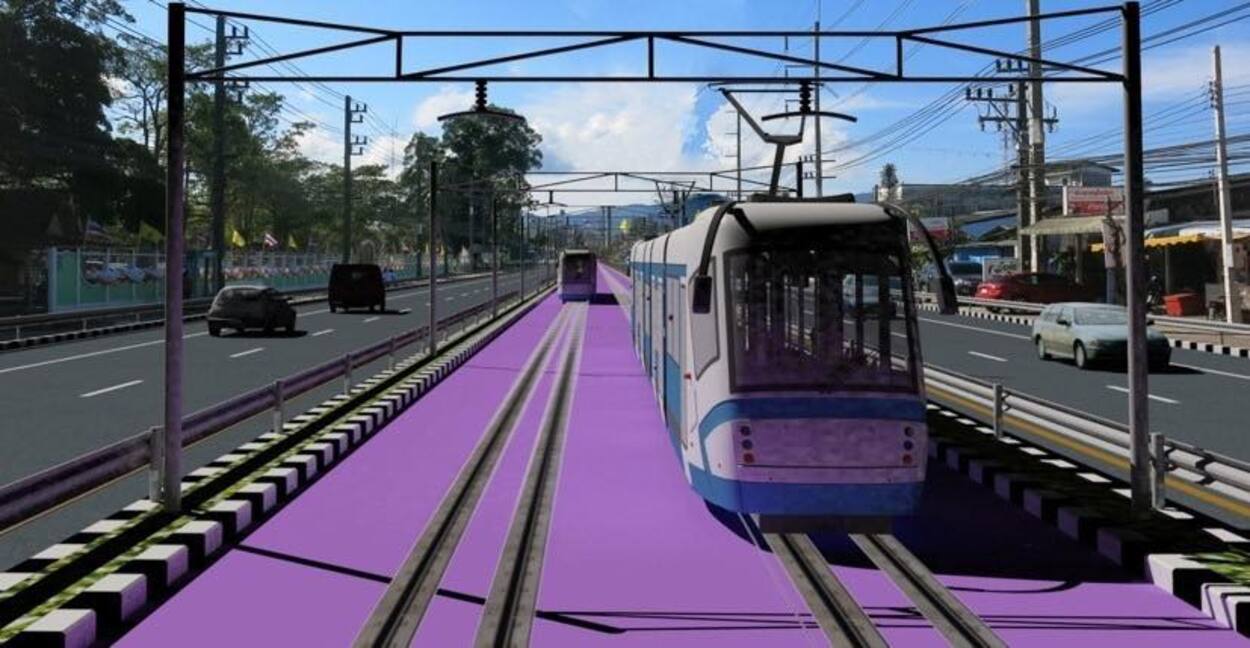Eight years after the initial proposals, Thailand’s regional mass transit plans in four major provinces remain stalled, with none of the lines breaking ground. Despite completed feasibility studies and initial timelines for construction between 2020 and 2022, the projects remain in limbo amid shifting government priorities and repeated rounds of new consultancy contracts.
The Mass Rapid Transit Authority of Thailand (MRTA) has led the efforts in Phuket, Chiang Mai, Nakhon Ratchasima, and Phitsanulok since 2017, when the National Council for Peace and Order first endorsed regional rail development. While initial studies were completed, construction has been consistently deferred. Progress now largely consists of contract renewals for revised feasibility assessments and design updates.
In Phuket, the proposed light rail Phase 1 line spans 41.7 kilometers from Phuket Airport to Chalong Five-Way Intersection. Construction is on hold pending the completion of road expansion projects on Highways 402 and 4027 by the Department of Highways, which are intended to reduce traffic congestion during the future rail build. Officials currently expect the project to begin in 2028, far beyond the original plan to launch construction in 2020.
In Chiang Mai, the MRTA is redrafting the Terms of Reference (TOR) for a new feasibility study of the Red Line, which would run 15.7 kilometers from Nakornping Hospital to the Mae Hia Saman Samakkee intersection. This revision stems from a directive by the national Traffic Policy and Planning Committee (TPPC) to expand the line to better connect with major tourist sites, potentially adding 5 kilometers and three stations to the original route.
Similarly, Nakhon Ratchasima’s transit project is also under TOR revision. Originally planned as a Green Line from Save One Market to Ban Narit Sawat, the proposed alignment has shifted to a new 18.9-kilometer Orange Line between Thepparat Hospital and Chor Hor Station. The change, made in response to community feedback, targets denser urban areas including schools and hospitals to better address inner-city congestion.
Both Chiang Mai and Nakhon Ratchasima lines are now expected to complete revised studies by 2026, with potential construction beginning in 2027 or later. Chiang Mai’s route, which includes underground sections, is projected to take longer to complete. Both lines will use steel-wheeled tram systems.
Meanwhile, in Phitsanulok, the 12.6-kilometer Red Line from Phitsanulok University to Central Plaza is under ongoing feasibility review, scheduled for completion in 2026. The line’s viability is closely tied to the opening of the high-speed rail station planned for the Bangkok-Chiang Mai route, as ridership projections depend on integration with this national project. The proposed system in Phitsanulok would use rubber-tired trams, though no construction schedule has been set.
Originally, most of these projects were to begin construction between 2020 and 2023, with operations launching by 2026 or 2027. However, shifting priorities, lack of firm government backing, and continuous study renewals have left all four projects in indefinite suspension. While officials continue to signal support, critics suggest the ongoing delays amount to little more than extended promises without concrete results.
Earlier plans for Phuket had once positioned it to become the first provincial city in Thailand to implement a tram system. That distinction now remains unclaimed.




